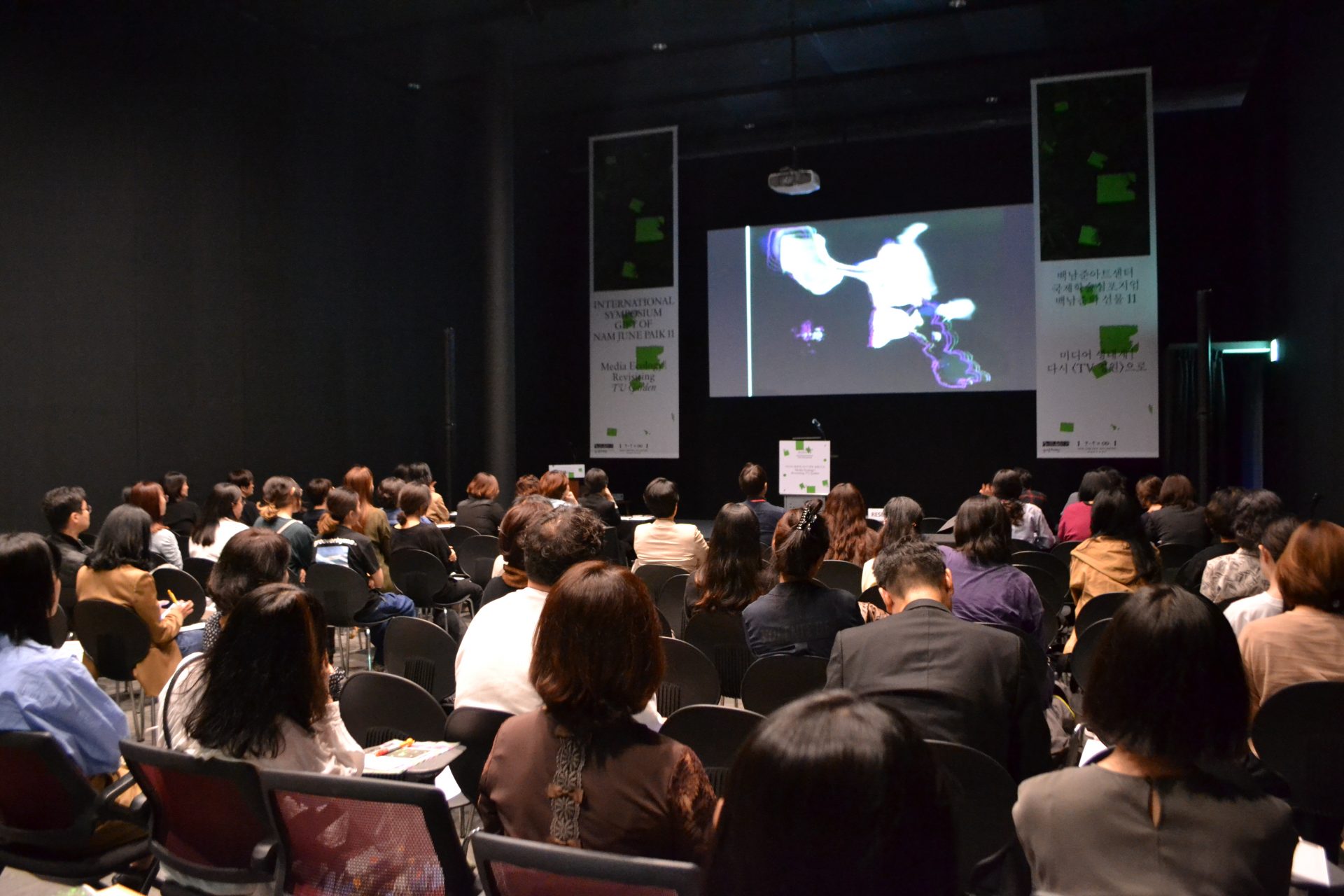Free
Since its opening in 2008, Nam June Paik Art Center has hosted a series of symposium entitled the ‘Gift of Nam June Paik’. In 2019, the 11th international symposium focuses on Paik’s vision of media communication to critically examine the Anthropocene and to discuss the direction of media ecology. Media are not only the environment surrounding us | but also, more importantly, exist as something to support and define our life. We cordially ask for your interest and participation in this opportunity to share the possibility of media ecology which goes beyond a mere academic metaphor and works as the technology of living.
LEE Dong-Hoo (Incheon National University)

LEE Dong-Hoo had received his Ph.D. degree in media technology from New York University and is a professor in the Department of Mass Communication at Incheon National University, whose primary research focus is digital media cultures and media ecology. Lee is the author of Mobile Media Environment and Human Beings, Walter One, and Understanding Media Ecology, and the co-author of Media and Korea’s Modern History, Extension of Communication, Mobile and Woman, Television Viewing in the Post-TV Era, and Myths of SNS Unveiled : The Revolution of ‘Talk, Play, and Love’ Medium. She also translated Perspectives on Culture, Technology, and Communication: The Media Ecology Tradition into Korean. Currently, Lee is writing a book to help readers to understand the media ecological perspective and researching the complex man-media, and media-media relationships caused by the changes in the media environment.
LEE Hee-Eun (Chosun University)

LEE Hee-Eun is a professor in the Department of Journalism and Communications at Chosun University. Her primary interests are culture and identity, technology and everyday life or ethical values. Lee received her Ph.D. degree in communication at University of Iowa and is the author of “Conversationalized Personal Storytelling in Television Entertainment Programs,” “Why Do Voice-Activated Technologies Sound Female?: Sound Technology and Gendered Voice of Digital Voice Assistants,” “Exploring YouTube as a form of Technology and Culture: Concepts of ‘Flow’ and Algorithm in Digital Culture Network.” Lee is also the co-author of Korean Society’s Media and Minority Cultural Politics and translated Bodies in Technology and The Marvelous Clouds: Toward a Philosophy of Elemental Media into Korean.
LEE Sooyoung (Gyeonggi Museum of Modern Art)

Lee Sooyoung is interested in the philosophy of technology and communicating with the public through the art of Nam June Paik and has planned various exhibitions and academic programs. She curated and co-curated not only many shows such as “X-Sound: John Cage, Nam June Paik and After”(2014), “Intermedia Theatre”(2016), “Haroon Mirza: Circuits and Sequences”(2016), and “Blast Theory : You Start It”(2017), but also various international symposiums such as “Coevolution: Cybernetics to Posthuman”(2017) and “Future Museum: Public to Commons”(2018).
Joanna Zylinska (Goldsmiths)

Joanna Zylinska is a writer, artist and curator, as well as Professor of New Media and Communications at Goldsmiths, University of London. She is the author of seven books ? including The End of Man: A Feminist Counterapocalypse (University of Minnesota Press, 2018, open access version available), Nonhuman Photography (MIT Press, 2017) and Minimal Ethics for the Anthropocene (Open Humanities Press, 2014, open access version available). Her own art practice involves experimenting with different kinds of photomedia.
LEE Soyo (Lifeforms in Culture)

Lee Soyo is an artist who is interested in the cultural practices of reducing living organisms and ecology to visual information and art and inquires into the methodologies and valued shared among biology, natural history, and art. Lee runs a one-person publishing company “Lifeforms in Culture,” to present artworks dealing with life in the form of books. She received her B.A. in the Department of the Arts at Rensselaer Polytechnic Institute with her interdisciplinary research between visual art and life science, and showed her works at National Museum of Modern and Contemporary Art, Korea, Seoul Museum of Art, National Gallery of Australia, and Mütter Museum of the College of Physicians of Philadelphia.
KIM Jun Soo (Center for Asian Urban Societies, SNU)

KIM Jun Soo received his B.A. and M.A. in sociology from Yonsei University, currently working in the transition city team of the Center for Asian Urban Societies, Seoul National University. Also working as an academic and educational manager in the Korean Space and Environment Research Association(KSERA), he has been carrying out researches regarding various theoretical and empirical cases regarding cities and nature, states and societies. His research articles have been published in many journals such as Economics and Society, Space and Society, Culture/Science, and International Journal of Urban Science. Early in his career, Kim was interested in the relationship between the state and nature and studied focusing on pigeons, a non-human agent mobilized in the process of Korea’s developmental urbanization. Then he enlarged the category of non-human agents to delve into the agency of, for example, urban infrastructures, concrete, dams, and facilities, which led to his research of the process of ‘the production of the Han River.’ Currently, he is working on the so-called case of ‘Guppycheon,’ a stream where schools of common aquarium fish, the guppy (Poecilia reticulata) are found swimming, to track the process in which society and nature have been disturbed.





